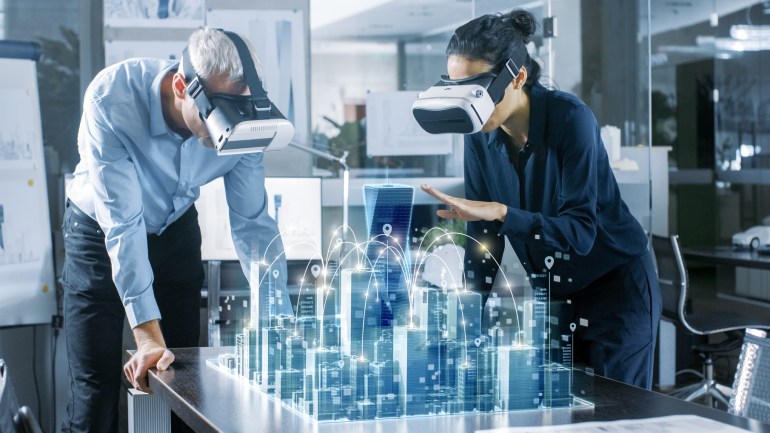 The software giant, Microsoft, presents with Microsoft Mesh an application that is supposed to replace video conferences with holo-conferences, where virtual conversation partners appear in life-size. However, the potential range of applications is much broader.
The software giant, Microsoft, presents with Microsoft Mesh an application that is supposed to replace video conferences with holo-conferences, where virtual conversation partners appear in life-size. However, the potential range of applications is much broader.
At its digital conference, Ignite, Microsoft presented Holoportation, which uses 3D capture technology to transform a lifelike image of a person into a virtual scene. The application behind it is called Microsoft Mesh, a new mixed reality platform supported by Azure that should allow people in different physical locations to participate in collaborative and shared holographic experiences on many types of devices.
"This has been Mixed Reality's dream from the start," said Microsoft Technical Fellow Alex Kipman. "You can actually feel like you're in the same place with someone sharing content, or you can teleport from various mixed reality devices and be present with people even when you're not physically together."
Microsoft Mesh enables geographically dispersed teams to hold more joint meetings, hold virtual drafting sessions, support others, learn together, and host virtual social meetups. People should initially be able to express themselves as avatars in these shared virtual experiences and, over time, use holoportation to project themselves as their most lifelike, photorealistic selves, according to the company.
The new platform is the result of years of Microsoft research and development in areas such as hand and eye tracking and HoloLens development through to the creation of persistent holograms and artificial intelligence models that can be used to create expressive avatars. Microsoft Mesh is based on Azure, Microsoft's cloud computing platform.
With Microsoft Mesh-enabled applications, for example, designers or engineers who work with physical 3D models - from bicycles to high-end furniture and jet engines to new sports stadiums - should be able to act as themselves in a shared virtual space to collaborate and repeat holographic models regardless of their physical location.
The Microsoft Mesh platform aims to provide developers with a full suite of AI-powered avatars, session management, spatial rendering, multi-user synchronization, and holoportation tools in the coming months to create collaborative solutions in mixed reality, the company said. Microsoft Mesh should be used to develop solutions that work on many different devices: HoloLens 2, a range of virtual reality headsets, smartphones, tablets and PCs.
By Daniela La Marca


